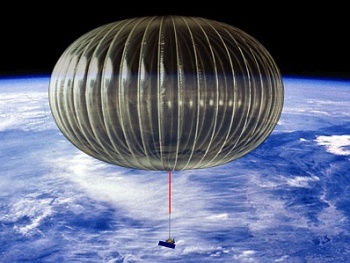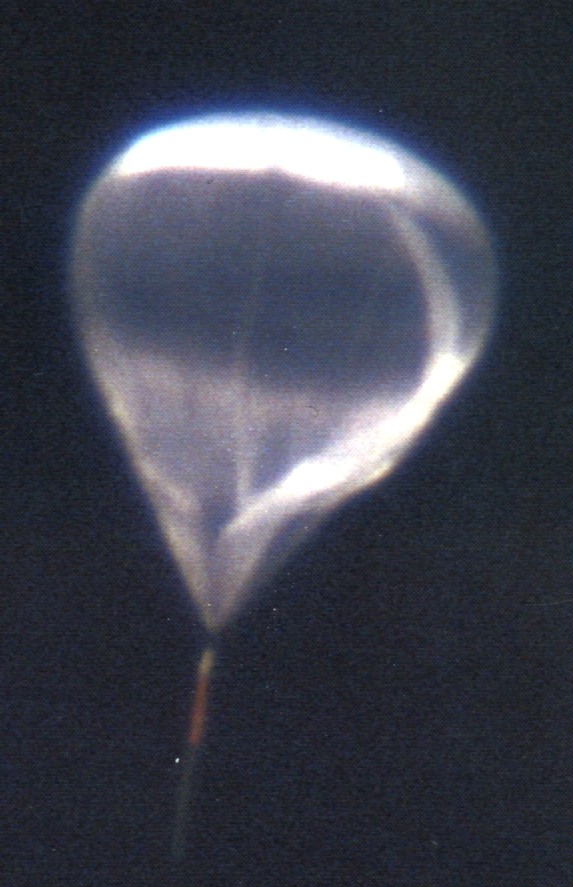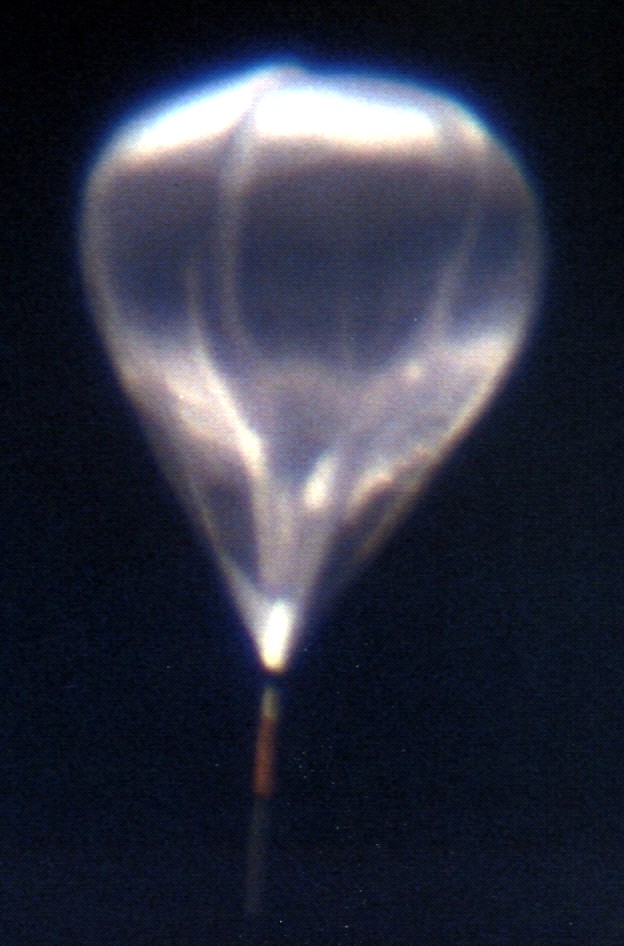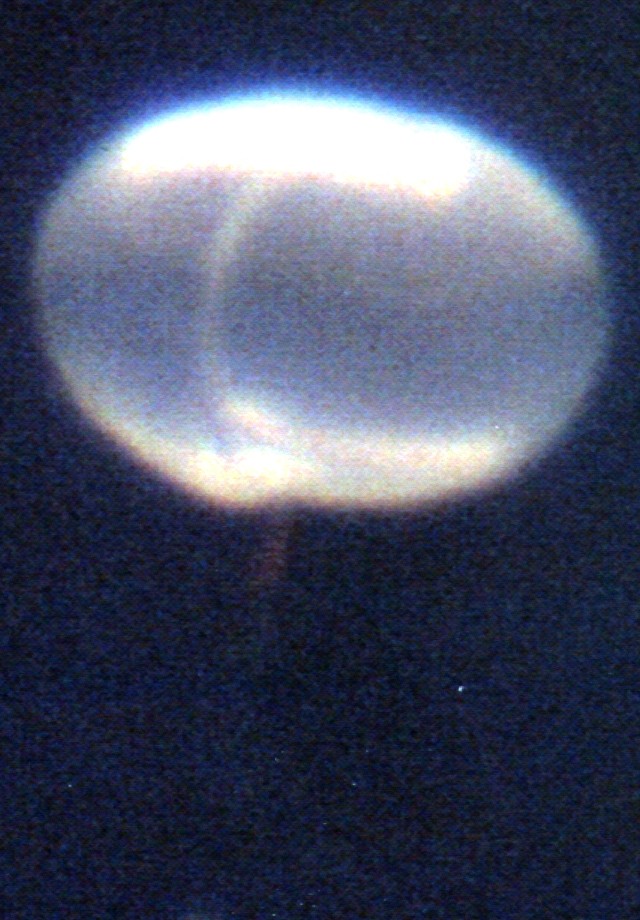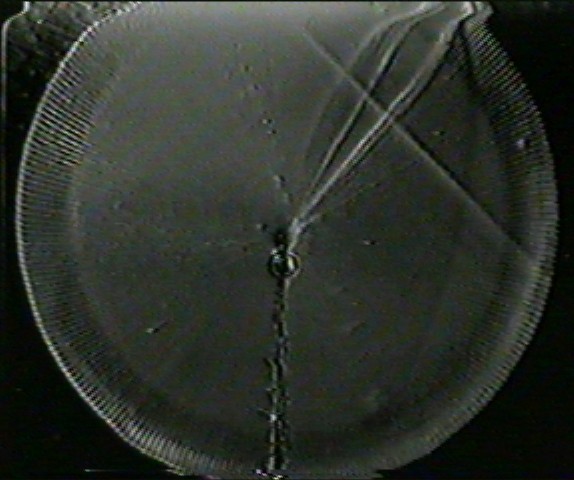Purpose of the flight and payload description
A project to develope a balloon system capable of providing scientific measurements for 100-day missions with floating altitude close to 35km transporting payloads of near 1.5 tons.
It is a super-pressure balloon made of a composite fabric (polyester + polyethylene film and fabric) that is filled with Helium and hermetically sealed. Meridional tendons provide additional rigidity to the envelope. The pressure inside the envelop is maintained above the ambient pressure at all times to keep the balloon afloat at a constant altitude. During daytime the internal pressure increases due to solar heating but the volume remains constant due to the rigidity of the envelope. At night the pressure drops due to infrared radiative cooling to space, but as long as the internal pressure remains above the ambient pressure, the balloon stays at the same altitude.
On the future, transported by stratospheric winds around the globe at 30m/s the ULDB would be make a full circunnavegation to Earth in about 2 weeks.
Details of the balloon flight
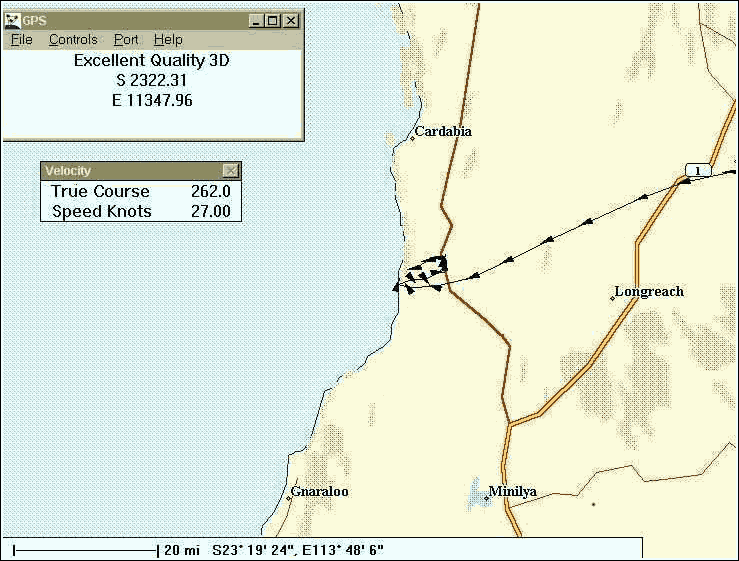
Balloon launched on: 3/9/2001 at 23:26 utc
Launch site: Australian Balloon Launching Station, Alice Springs, Australia
Balloon launched by: National Scientific Balloon Facility (NSBF)
Balloon manufacturer/size/composition: Ultra Long Duration Balloon 800.000 m3 - SF4-18.38-1.5/.8-N
Balloon serial number: R18.38-1.5UI-01
Flight identification number: 496NT
End of flight (L for landing time, W for last contact, otherwise termination time): 3/10/2001 at 23:17 utc
Balloon flight duration (F: time at float only, otherwise total flight time in d:days / h:hours or m:minutes - ): 24 h 42 m
Landing site: 90 nautic miles N of Carnarvon, Western Australia
The balloon was launched at 9:26 a.m. local time on March 10th, 2001 by dynamic method assisted by a crane as launch vehicle and using a auxiliary balloon to help to deploy the Ultra Long Duration Balloon material.
Balloon launch and ascent were nominal. The ascent rate was slightly slower than predicted before entering the tropopause and averaged near predicted ascent rate after the tropopause.
The balloon pressurization and stable altitude occurred at 32.8 km (107,500 ft) and the craft started a flight path due west but soon after the first day of flight was evident that the balloon developed a leak and the flight was terminated before the balloon reaches the ocean so it can be recovered.
The aim of the flight was to close observe the behavior of the balloon after the failure of the ULDB that carried the NIGHTGLOW instrument in the same australian campaign of that year. So, the balloon carried only the flight gondolas (telemetry, solar panels, communications and ballast control).
Following a normal launch and after reach altitude, observing the balloon by telescope showed a shape discontinuity. Nevertheless the flight continued through the day with minor variations in pressure observed. As the flight altitude was very stable, holding at 32.8 km (107,500 ft) plus or minus 120 m the decision was made to continue with the flight because performance was very close to that predicted.
As the sun set, the pressure inside fell off as expected. Then the balloon flew over thunderstorm and the ballast drops at night to mantain flight level was much greater than predicted. After sunrise the flight altitude returned to 32.6 km (107,000 ft), as the differential pressure barely moved above the nighttime pressure was evident that the balloon developed a leak at some point during the flight so was terminated.
If you consider this website interesting or useful, you can help me to keep it up and running with a small donation to cover the operational costs. Just the equivalent of the price of a cup of coffee helps a lot.

